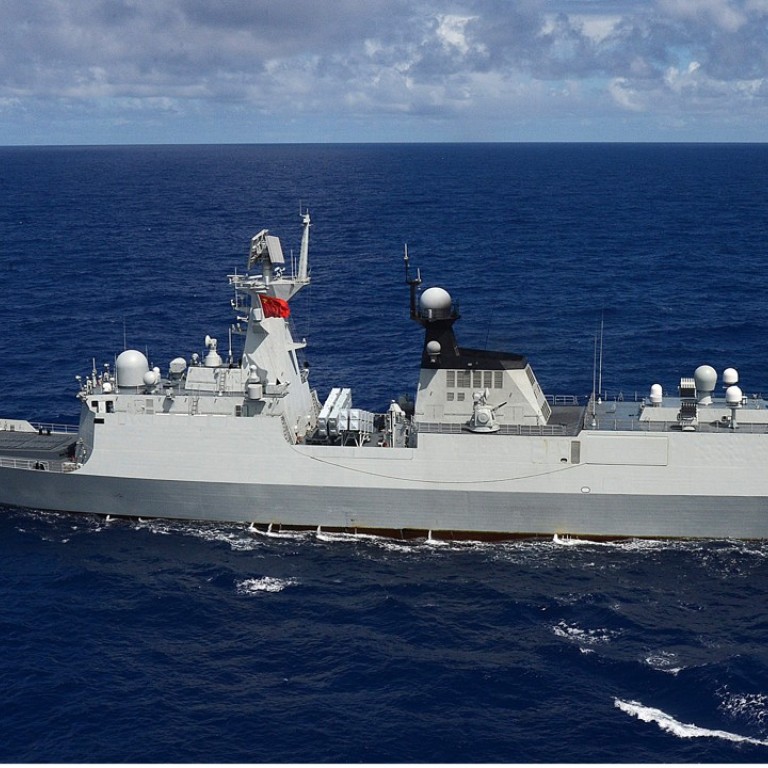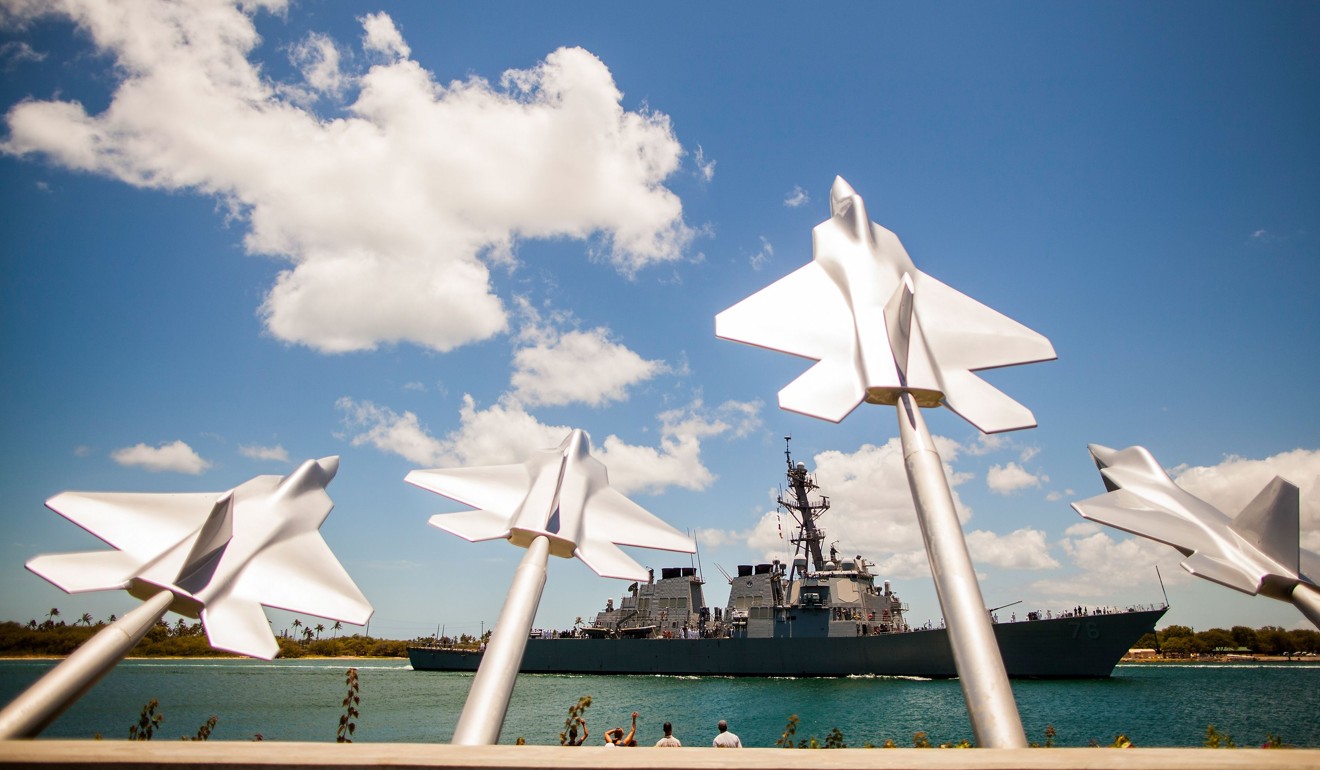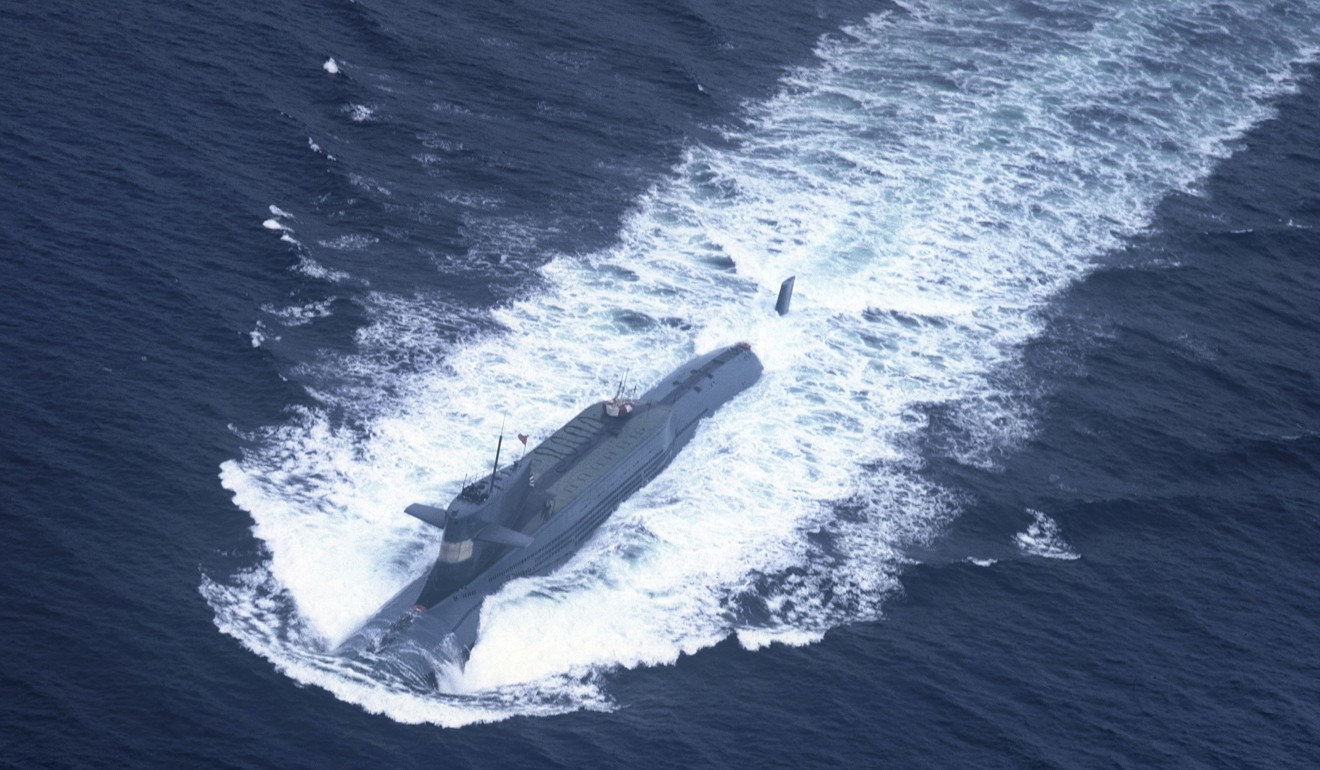
Naval drill row signals rough seas ahead for China-US military ties
US withdrawal of an invite for China’s navy to take part in exercises jeopardises efforts to forge closer links between two sides’ armed forces, writes Mathieu Duchâtel
The US Department of Defence presented the withdrawal of an invitation to China to attend the Rim of the Pacific naval exercises this year as an “an initial response to China’s continued militarisation of the South China Sea”.
But just as inviting the PLA Navy to the same exercises in 2012 did not lead to self-restraint from China in the disputed waters, not inviting its forces this time around will certainly not result in a slowdown of China’s arms build-up in its four militarised outposts in the Spratly Islands and the Paracels: Woody Island, Subi Reef, Fiery Cross Reef and Mischief Reef.
For the US, questioning engagement with the Chinese military is about more than the South China Sea. And for China, asserting administrative control and building a dominant military presence in the South China Sea is not going to be affected by the level of military-to-military relations with the US.
Back in 2011, inviting the PLA Navy to attend RIMPAC 2012 was a big development in US-China military ties. Rim of the Pacific is the largest international naval exercise in the world. It bears symbolic significance, showcasing a maritime order in the Pacific Ocean structured by US naval power.
The invitations to China to previous exercises did not come without a cost for the United States.
There is no full open source assessment of what the PLA Navy gained in terms of operational capability by attending RIMPAC 2014 and RIMPAC 2016. China was excluded from some of the most sensitive operations and clear limitations were placed to the depth of contacts. But even with such constraints, the PLA could still learn much from a first-hand observation of the US Navy’s standard operation procedures in running large-scale joint operations for a variety of missions, ranging from disaster relief to sea control.

Arguably, the PLA Navy deployment was also meant to signal to the US that China was not entirely treated as an equal partner as it was excluded from the most sensitive elements of the exercise.
From a Chinese perspective, there appears to be no linkage between military engagement with foreign navies and how China handles territorial disputes. Military diplomacy from the Gulf of Aden to Rim of the Pacific exercises project a cooperative image, but China is willing to accept the cost to its image of using military power in the South China Sea. It is in China’s interest to keep the two logics separated and in the US’ interest to create a linkage.
Indeed, the militarisation of the South China Sea is accelerating, with bold actions coming in rapid succession. Each reflects an aspect of China’s operational and political goals. The deployment of anti-ship and air defence missiles is classical anti-access/area denial. It targets US surveillance activities against the Chinese navy – especially the Hainan nuclear submarine base – and signals China’s resolve to have the capacity to respond to any foreign military presence in the area. Landing a H6-K strategic bomber on Woody Island makes little sense in terms of building China’s nuclear deterrent. While the aeroplane has a nuclear capacity, it can also carry anti-ship and land-attack cruise missiles, so it is more a signal to rival claimants in the South China Sea.
Finally, now that the coastguard is under the authority of the Central Military Commission – thus strictly speaking a military arm – joint patrols are conducted with the PLA Navy, stepping up China’s show of strength and departing from the past practice of projecting the image of civilian law-enforcement patrols. This is about reinforcing effective administrative control at the expense of other claimants.

Since the US decision is likely to have only a marginal impact on China’s South China Sea policy, what is really at stake? Not giving China an invitation to RIMPAC is politically as meaningful as inviting China was in the first place. It creates a precedent for disengagement. The US is borrowing from China’s playbook, linking military cooperation to other issues in their relationship.
China used to interrupt military diplomacy with the US as each new arms package was approved for sale to Taiwan. The US decision could put an end to the recent stability in military-to-military relations between the two countries. Despite many disagreements and tensions, engagement was deepening.
The term “initial response” hints at the possibility that more might be coming. There are many options for disengagement and RIMPAC creates a precedent. It is unclear today if the US has communicated to its Chinese counterparts what possible next steps could follow. But larger questions remain. Was China being rewarded with status and access to information in exchange for nothing? Is engagement encouraging China to be more assertive in its use of naval power because invitations are interpreted in Beijing as a recognition of China’s strength rather than an attempt to build trust?
The objective reality is that so far, the issue of engagement on whose terms is far from being solved in US-China military relations. It seems that overall, China has only engaged in military diplomacy with the US when it benefited its own interests more than it served the goals of the US. At the same time, China is working at launching an alternative large-scale international naval exercise with Asean countries. Beyond the South China Sea, the RIMPAC story is about recalibrating the balance between cooperation and confrontation in US-China military relations, and it might pave the way for a logic of disengagement.
Dr Mathieu Duchâtel is senior policy fellow and deputy director of the Asia and China programme at the European Council of Foreign Relations
